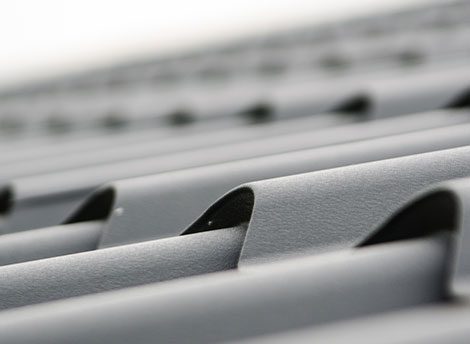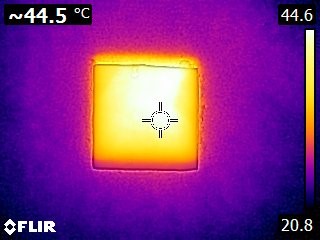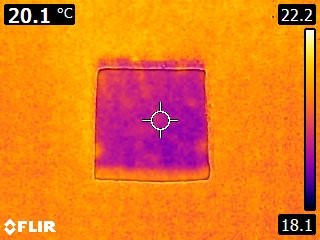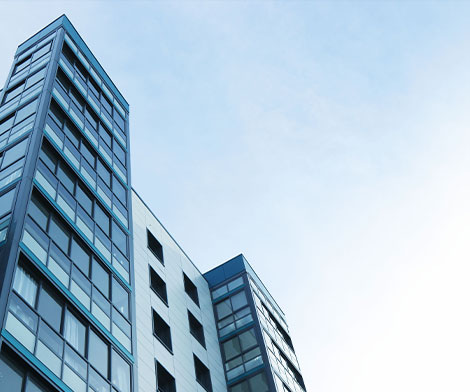How to reduce urban heat island effect
Stimulating innovation to reduce the urban heat island
OliKrom is the industry expert in color intelligence. Every day, our teams develop new coatings to reduce urban heat island.
Do you want to limit the heating of one of your products in the sun? We put our 15 years of expertise in smart materials science at your disposal to create an optimized green product together.
Under the combined effect of increasing urbanization and global climate change, the warming of our cities (day and night) is intensifying. Heat waves and heat waves are occurring more frequently and with increasing intensity.
The consequences of urban heat are becoming increasingly visible. Increasing urban temperatures are expected to expose more citizens to the negative health effects of extreme heat. These health problems can include exhaustion, heat stroke, and worse...
It is illusory to consider the use of air conditioning as the only answer to rising temperatures of our cities, both from an energy and environmental point of view. According to a report by the International Energy Agency, the development of air conditioning in emerging countries would cause a doubling of CO2 emissions by 2050.
Faced with the challenge of the urban heat island impacts, our scientific team is collaborating with many industrialists to create the adaptive coatings of tomorrow.
Smart Coatings in response to extreme climate challenges
Rethink the architecture of an existing product to limit heat urban island impacts

The phenomenon of urban heat islands forces us to rethink the products that surround us in our modern cities. Outdoor spaces, especially public spaces, have an important role to play, as do the facades surfaces and roofs of buildings.
In the city, solar energy is stored in the products of buildings and the asphalt of roads or parking lots, and this energy is released into the urban atmosphere at night (heat urban island effects). The difference in temperature can reach 10°C on a daily basis between the city center and the countryside.
To rethink a material, our teams analyze your product and its components to diagnose whether an absorbent coating should be developed to create a dynamic optical barrier or, on the contrary, to limit as much as possible any absorption responsible for thermal heating.
One of our strengths is our multidisciplinary approach, with complementary skills in chemistry, thermodynamic, photo-physic, etc. This know-how enables us to support our industrial partners in their green approach and design of product for effectively limiting the impacts of urban heat islands in summer in our cities.
Create a dynamic light barrier

To limit the effect of urban heat islands in summer, one strategy is to create an optical barrier. The idea is to absorb the sun's energy on the surface like a natural shadow. The advent of intelligent materials that change color according to an external disturbance such as solar radiation and/or temperature makes it possible to consider the creation of this type of interactive and intelligent barrier. The objective is to capture only the solar radiation when the intensity and/or temperature becomes too high.
To create this type of dynamic optical barrier with the sun, we exploit the thermodynamic processes of smart products that have the ability to modulate their optical response depending on temperature, light...
As an example:
- the thermochromic effect of some coatings can be used to lighten a color and thus limit the thermal effect generated,
- photochromic compounds can darken a support (plastic, glass, batch...) to create a barrier and protect from the effect of light.
To optimize a coating, our solar simulator allows us to reproduce the thermal effect of the sun and to optimize the constitution of the product. We study in particular the impact of the coefficients of reflectivity, absorption, emission, then we map with an infrared camera the thermal gain generated.
Limit absorption to optimize thermal impact

If you have a more or less conductive mass product, it is useless to think of creating an optical barrier to protect it from light. On the contrary, you will absorb solar energy on the surface and by conductivity, create a thermal effect that will heat your material.
To optimize your product and limit the heat urban island impact, we consider two solutions:
- Analyze each component of your product, identify the ingredients to optimize and/or replace to recreate an optimized version of your material
- Create a surface coating to limit the absorption of solar radiation as much as possible
Whatever the hypothesis adopted, one of the characteristics to be studied in order to fight effectively against heat islands is the capacity of a material to reflect the sun's rays without storing them: this is the albedo effect. The greater the albedo effect, the less the urban temperatures increases, as the heat is immediately sent back to the atmosphere.
To optimize a material, it is a compromise to create between the albedo coefficients and the optical contributions of reflectivity, absorption, emission, thermodynamics, photophysics, materials science ...
Every day, our teams contribute to scientific progress to create the coatings of tomorrow, to limit the extreme impact on the environment, the urban heat islands at night in our cities or our rural areas, to rethink infrastructures, buildings, roofs...
Would you like to develop a cold paint?

Our teams of experts are currently designed "cold" paints that limit the impact of heat on a building of our cities, as well as rural areas.
On a wall or floor surfaces exposed to direct sunlight, "cold" paint will allow the reflection of part of the heat away from the surface, significantly limiting the temperature felt on it.
Such custom smart paints can be used to cool facades, concrete, floors, asphalt, roofs... It took several years of scientific research to optimize the properties and develop such high-performance paints.
Particularly interesting in urban areas to reduce heat island effects, cold paint is also very useful in rural areas to protect buildings, usually covered with a metal roof and subject to extreme temperatures during hot seasons.
Are you interested? Contact us
![]()
CONTACT US
We will get back to you as soon as possible..
"*" indicates required fields

